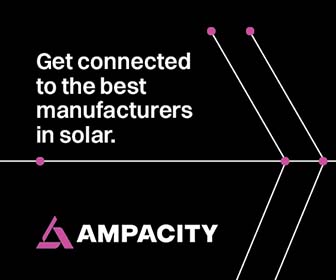Keeping the Promise of Community Solar Gardens
Community solar gardens (CSGs) offer the promise to millions-perhaps someday billions-of people to participate in what has proven to be one of the most efficient and effective ways to slow global warming.
CSGs offer all people, regardless of location, economic, or social class, the ability to be a part of a solution that will affect generations upon generations. One hundred years from now, most energy consumers will get their energy from clean and renewable sources.
 According to the Solar Energy Industries Association (SEIA), community solar is where a central solar array is built by a utility, municipality, or third-party owner, on either public or private property. Residential and commercial customers then subscribe to the solar array, pledging to purchase their electricity from the array for a contract-specified period of years.
According to the Solar Energy Industries Association (SEIA), community solar is where a central solar array is built by a utility, municipality, or third-party owner, on either public or private property. Residential and commercial customers then subscribe to the solar array, pledging to purchase their electricity from the array for a contract-specified period of years.
Currently, 42 states have at least one community solar project in the ground, with 1.2 gigawatts (GW) installed at the time of publication; SEIA suggests that more than 3 GW-enough to power more than half a million homes-will be on board over the next several years. The leaders in this movement are Minnesota, Colorado, New York, and Massachusetts, with states like New Jersey, Illinois, Maryland, Nevada, and California coming on strong.
But it's not just in those states-there will be an evolution of the energy infrastructure across the entire country that enables resource efficiency not even imaginable right now. Community solar projects will play an integral part, but implementing them won't necessarily be easy.
Putting a solar project together can be challenging. From the land acquisition process to the construction to the different regulations surrounding each particular level of project (federal, state and local), it's a wonder that any solar projects get done at all.
Community solar projects pose particular difficulties. Rather than dealing with one host for a project, it's now opened up to the community. Instead of dealing with one offtaker, there are anywhere from dozens to thousands of subscribers, all with different credit ratings.
CSG subscribers can range from residential, small and large commercial, and industrial, to municipal governments, school systems, and federally classified low- and medium-income facilities. Navigating the logistical and administrative infrastructure to work with all of these varying stakeholders is enough to stop most projects in their tracks. But the challenges don't end there.
 CSG subscribers are often presented to developers in prescribed mixes of percentages for the makeup of the subscriber base - handling the accurate submission and management of billing credits, Solar Renewable Energy Credits (SREC) payments, and replacement of those that exit from the base for whatever reason, as well as all of the necessary contracting and legal documentation, becomes a juggling act that can easily turn into a complicated mess. For all of these reasons, CSGs are about as complicated as solar projects can get.
CSG subscribers are often presented to developers in prescribed mixes of percentages for the makeup of the subscriber base - handling the accurate submission and management of billing credits, Solar Renewable Energy Credits (SREC) payments, and replacement of those that exit from the base for whatever reason, as well as all of the necessary contracting and legal documentation, becomes a juggling act that can easily turn into a complicated mess. For all of these reasons, CSGs are about as complicated as solar projects can get.
Due to the fact that 50-75 percent of potential solar customers can't put solar panels on their own roof or land, community solar becomes the mechanism that allows them to access the Solar Revolution.Given the influx of money into the segment, the Smart Electric Power Alliance (SEPA) predicts that community solar will make up 30 percent of all distributed-generation solar electricity by 2020, with 42 states having at least one community solar project active. Clearly, the potential for a community solar boom market is there.
For most populations around the globe, solar is easily the most accessible resource on a utility scale and distributed generation basis. There's always room for a "garden" in nearly every "community." This is the promise of CSGs, and it calls to the industry to respond with resources, action, persistence, and drive to fill the need.
As challenging as they are, community solar projects work. They provide access to solar for people who, for myriad reasons, can't afford to put solar on their own roofs. CSG democratizes solar in a way few other opportunities do, and it's the perfect solution for cities with limited roof space but abundant land.
In other words, community solar is not a passing fad-it's the fastest-growing segment of the solar industry. As more people recognize its potential, the faster it will grow. And because it is complicated, only companies with expertise in this area will succeed in taking advantage of this rapidly growing market.
 Shaun C. Laughlin isHead of U.S. Strategic Development for Standard Solar, which handles all aspects of solar power projects, from development to asset management.
Shaun C. Laughlin isHead of U.S. Strategic Development for Standard Solar, which handles all aspects of solar power projects, from development to asset management.
Standard Solar | www.standardsolar.com
Volume: 2019 July/August








.png?r=8674)



